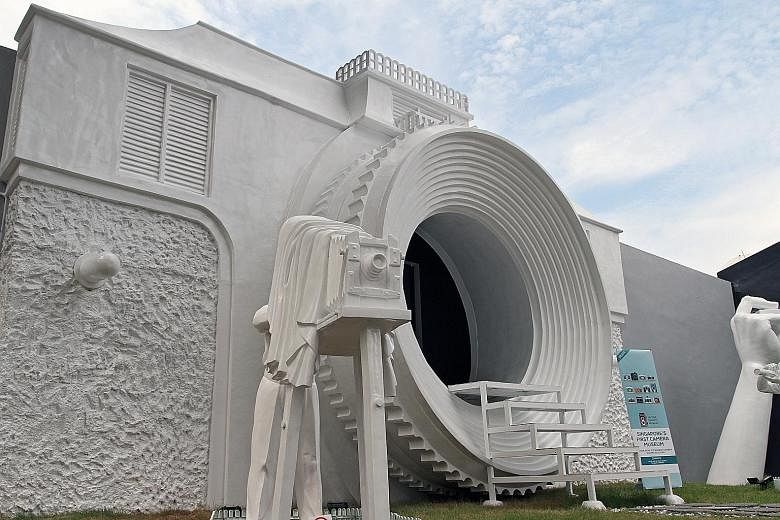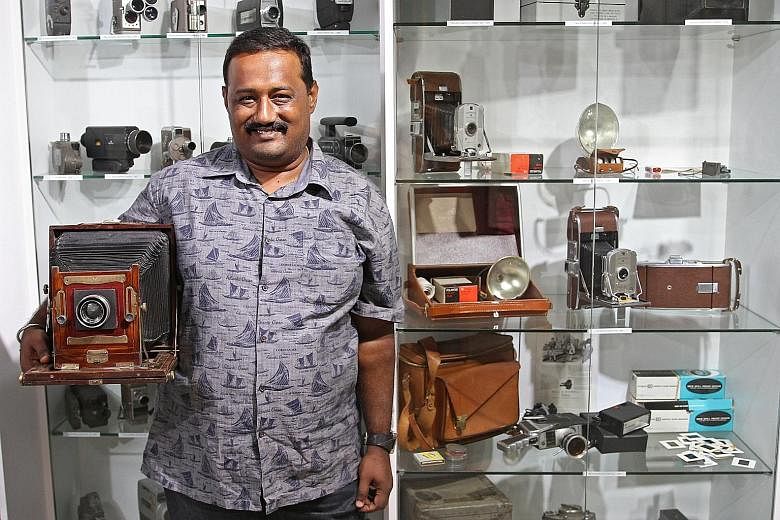A new attraction in the historic district of Kampong Glam is designed like a giant white camera.
It is home to the Vintage Camera's Museum, Singapore's first and largest repository of the instrument. On display are about 1,000 cameras dating from the late 19th century to early 2000s, including an impressive range of spy cameras and the pigeon camera, a lightweight device that was attached to pigeons to take aerial shots in the early 1900s.
An exhibit not to be missed is a recreation of the Mammoth Camera, a 6m-long contraption that was invented in 1900 solely to shoot the complete body of a train.
Steel trader S. Ramanathan bought and retrofitted an empty building in Jalan Kledek and turned it into the private museum, which had its soft opening at the start of this month. All the cameras in the nearly 2,500 sq ft space are from the personal collection of Mr Ramanathan and his cousin, artist A.P. Shreethar.
Mr Ramanathan, the museum's owner, was drawn to cameras because of his father, who was an avid enthusiast, while his cousin considers the piece of equipment "an enemy" as the demand for realistic paintings dropped when cameras came along.
"Shreethar decided to glorify his enemy by collecting all the various types and putting them on display and we decided to do it together," says Mr Ramanathan, 37.
-
BOOK IT / VINTAGE CAMERA'S MUSEUM
-
WHERE: 8C and 8D Jalan Kledek WHEN: 10.30am to 9.30pm daily
ADMISSION: $20 an adult, $15 a child aged six to 12 and senior citizen aged 60 and older
From 2000, the duo set out to collect every type of camera invented. They turned to friends and family members, trawled the Internet, enlisted the help of dealers and travelled to auction houses around the world.
They have amassed about 7,000 cameras to date. Mr Ramanathan declines to reveal the amount he has spent on the cameras and the museum, but says it is a "huge amount".
They picked older cameras to showcase at the museum, or as Mr Ramanathan puts it, "those cameras that you don't see much of anymore".
He and Shreethar, 48, display up to 600 cameras in another museum of the same name in Chennai, India, and keep the rest in storage units.
Mr Ramanathan, an Indian citizen and Singapore permanent resident, runs the museum here, while the Chennai museum, which opened last August, is run by Shreethar, who is based there.
They believe a museum is the best way to inform young people about the evolution of the camera. "Nowadays, taking photos is so simple with your smartphone, but the first photograph shot in the 1820s took 8 1/2 hours of exposure time.
"The camera continues to transform, but it remains a vital part of our lives and we want to show how important it was in the past too," says Mr Ramanathan, who is married with an eight-year-old son.
The cameras are arranged according to type and some are accompanied by information panels or videos. Entry to the museum costs $20 an adult and $15 a child or senior.
The owner's most-prized item in the museum here is the pigeon camera, which he calls "the world's first drone". He says: "There are very few pieces of these in the world as not many were made. I bought it for a five-figure sum from a seller in Vienna, Austria, before he put it up for auction."
Fans of James Bond and espionage movies will probably recognise the miniature spy cameras on show, which include unusual types such as cameras disguised to look like a walking cane, a cigarette lighter and a pocket watch.
The Click Art section offers opportunities for visitors to snap photographs of themselves as they shake the hand of Singapore's founding prime minister Lee Kuan Yew or with nine 3D paintings by Shreethar of well-known people, such as the pioneering Lumiere brothers and actor Charlie Chaplin.
Mr Ramanathan plans to refresh the display "after some time" and add silicone statues of the Lumiere brothers and George Eastman, the inventor of the Kodak camera.
He says his search for more cameras is never-ending.
"There is an ocean of cameras out there and we just need to keep digging. There are so many more to be found."
Look out for these 6 cameras
PIGEON CAMERA
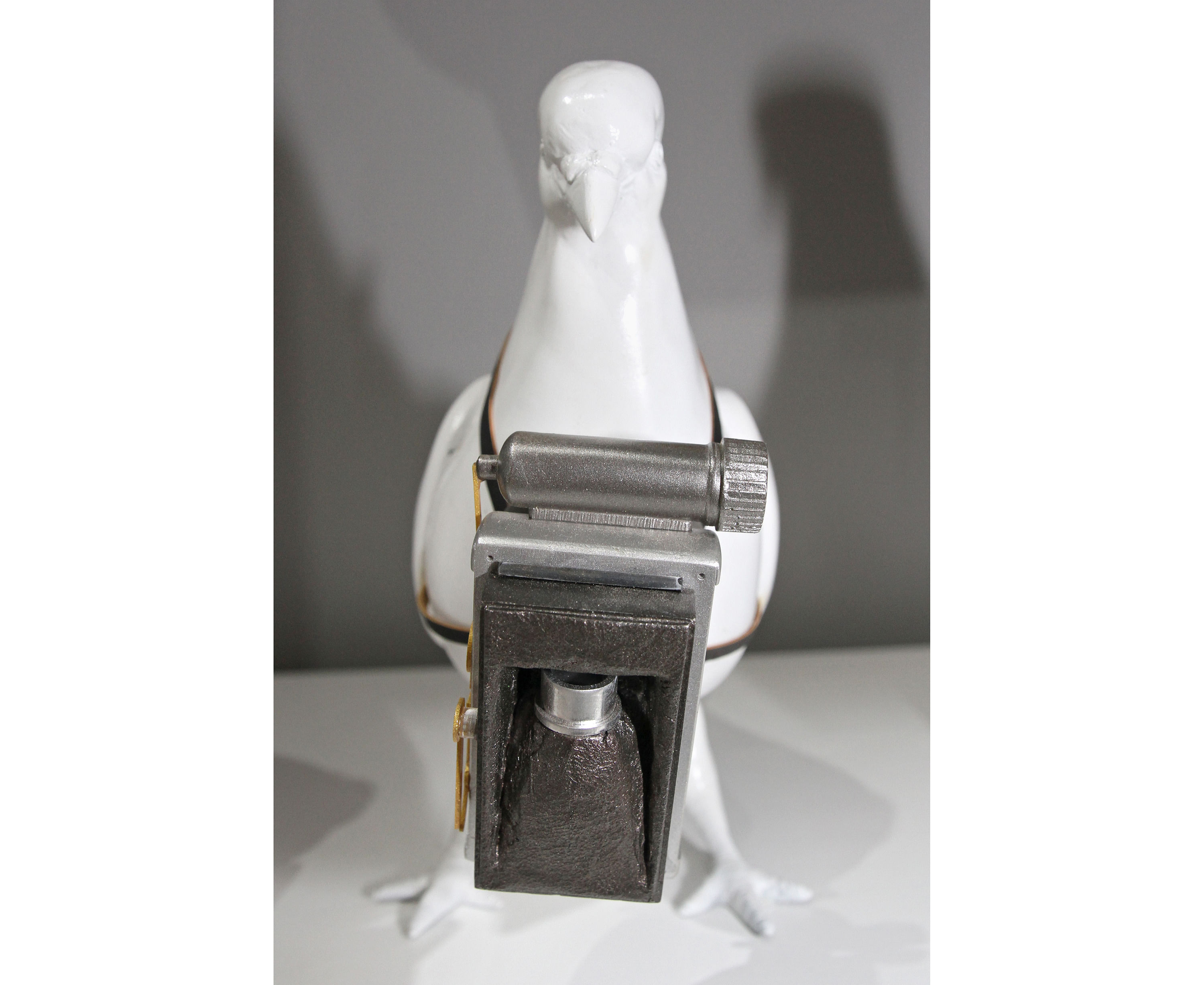
German apothecary Julius Neubronner was inspired to attach a camera to the common bird and trace its route after one of his birds lost its orientation and returned a month later.
In 1907, he developed a lightweight miniature camera no heavier than 75g and attached it to the pigeon's breast using a harness and aluminium cuirass.
He activated the camera's timer before the pigeon was released and it returned with photos.
ROKUOH-SHA TYPE 89 WWII ERA JAPANESE MACHINE-GUN CAMERA

During World War II, the Japanese manufactured these as training weapons for soldiers. These sturdy and heavy machine-gun cameras were mounted on military aircraft and the soldiers practised "firing" at enemies by pulling the trigger before gradually moving on to using real machine guns.
ECHO-8 CIGARETTE LIGHTER SPY CAMERA
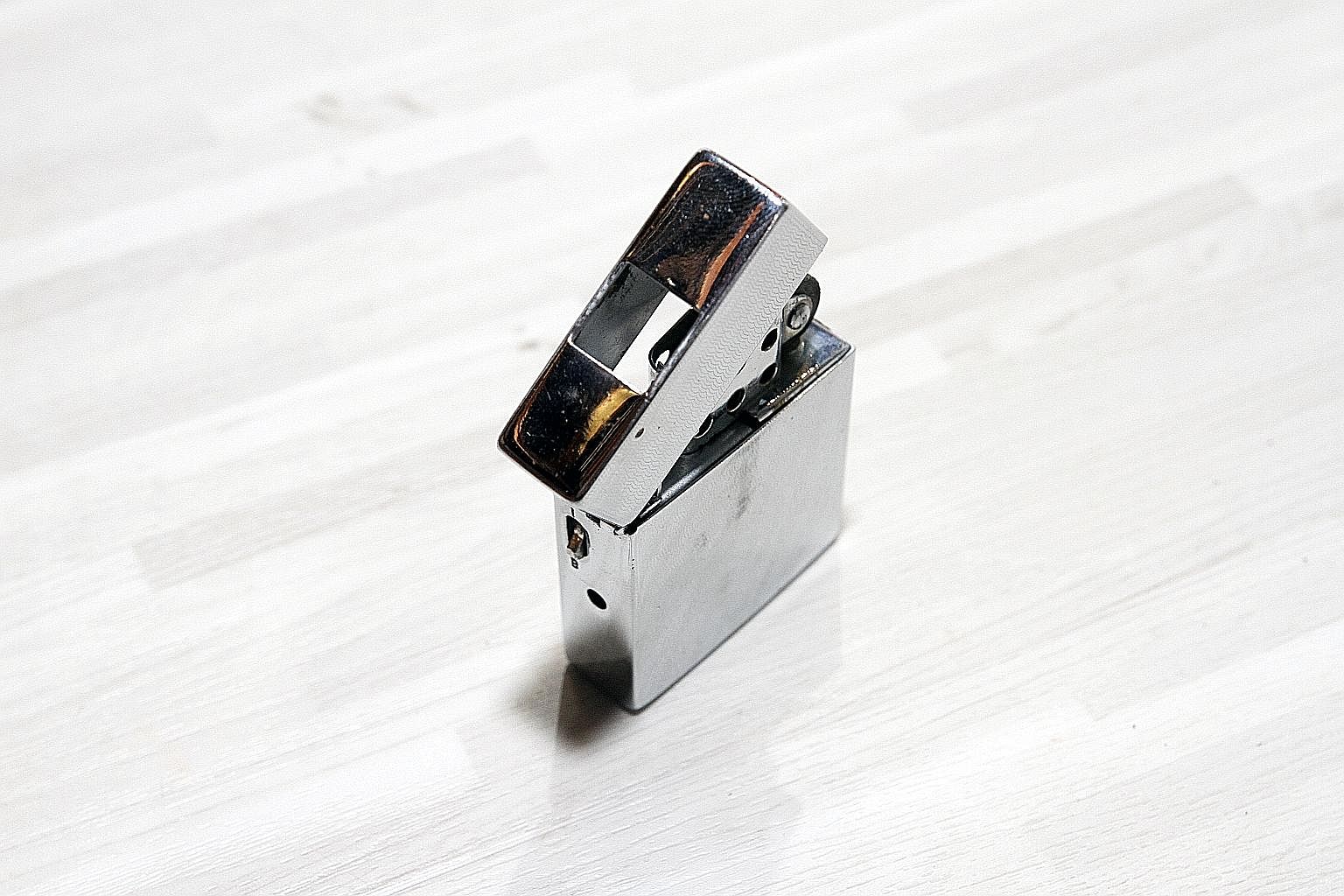
A tiny spy camera is concealed in this cigarette lighter, which was invented in 1951. Sales of this item shot through the roof after it was featured in the romance comedy flick Roman Holiday (1953).
ARMY TYPE 99 AERIAL CAMERA (GSK-99)
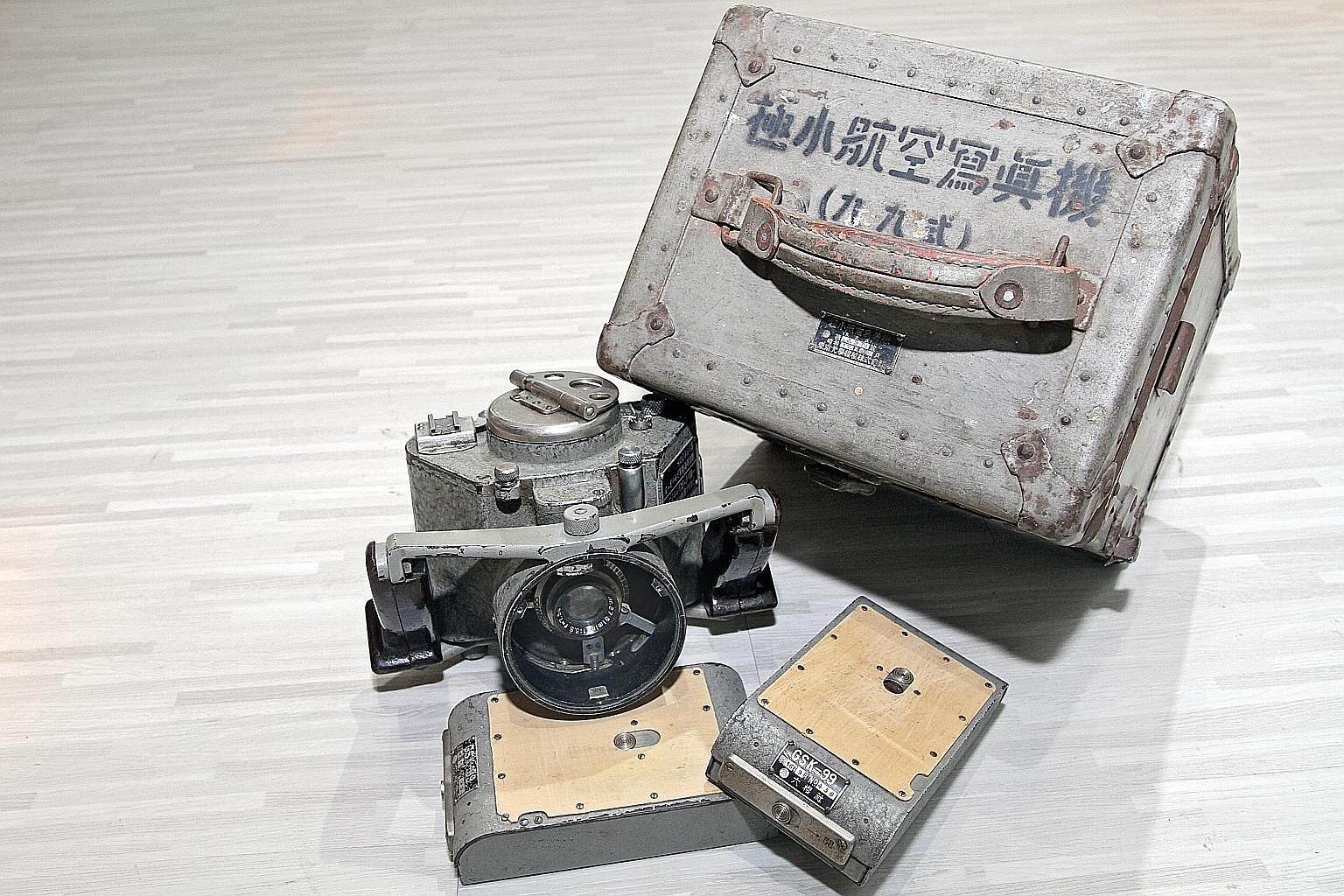
The Japanese army also used cameras for mapping and general reconnaissance.
Users of these cameras gripped the two handles on the sides of the camera. They could also be attached to the aircraft frame.
Fewer than 3,000 of these cameras were produced.
POLAROID LAND MODEL
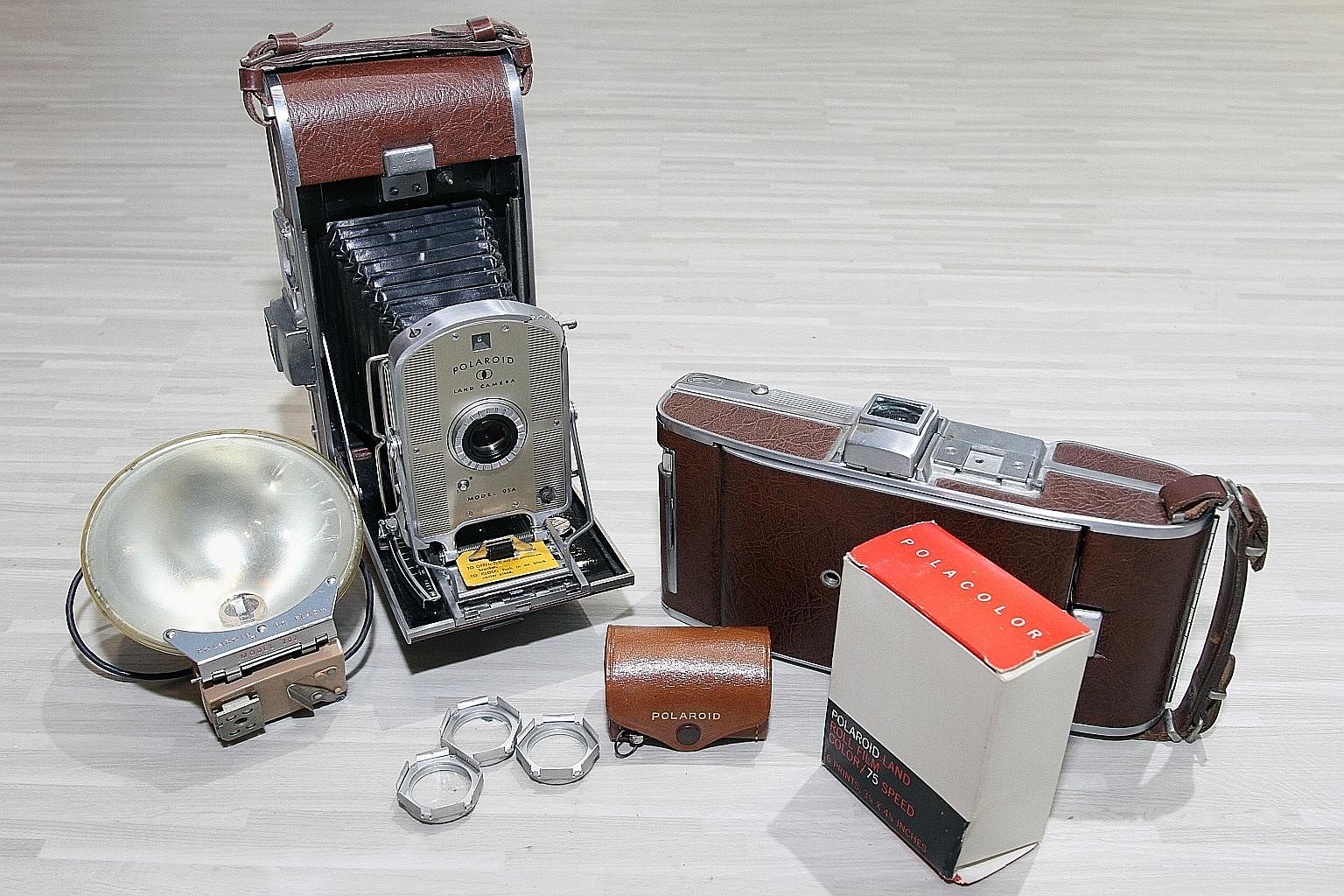
95 Made in 1948, this is the very first Polaroid camera from American inventor Edwin H. Land, the founder of Polaroid Corporation.
EASTMAN VIEW CAMERA NO. 2-D ATTACHED ON TOP OF A RIES TRIPOD
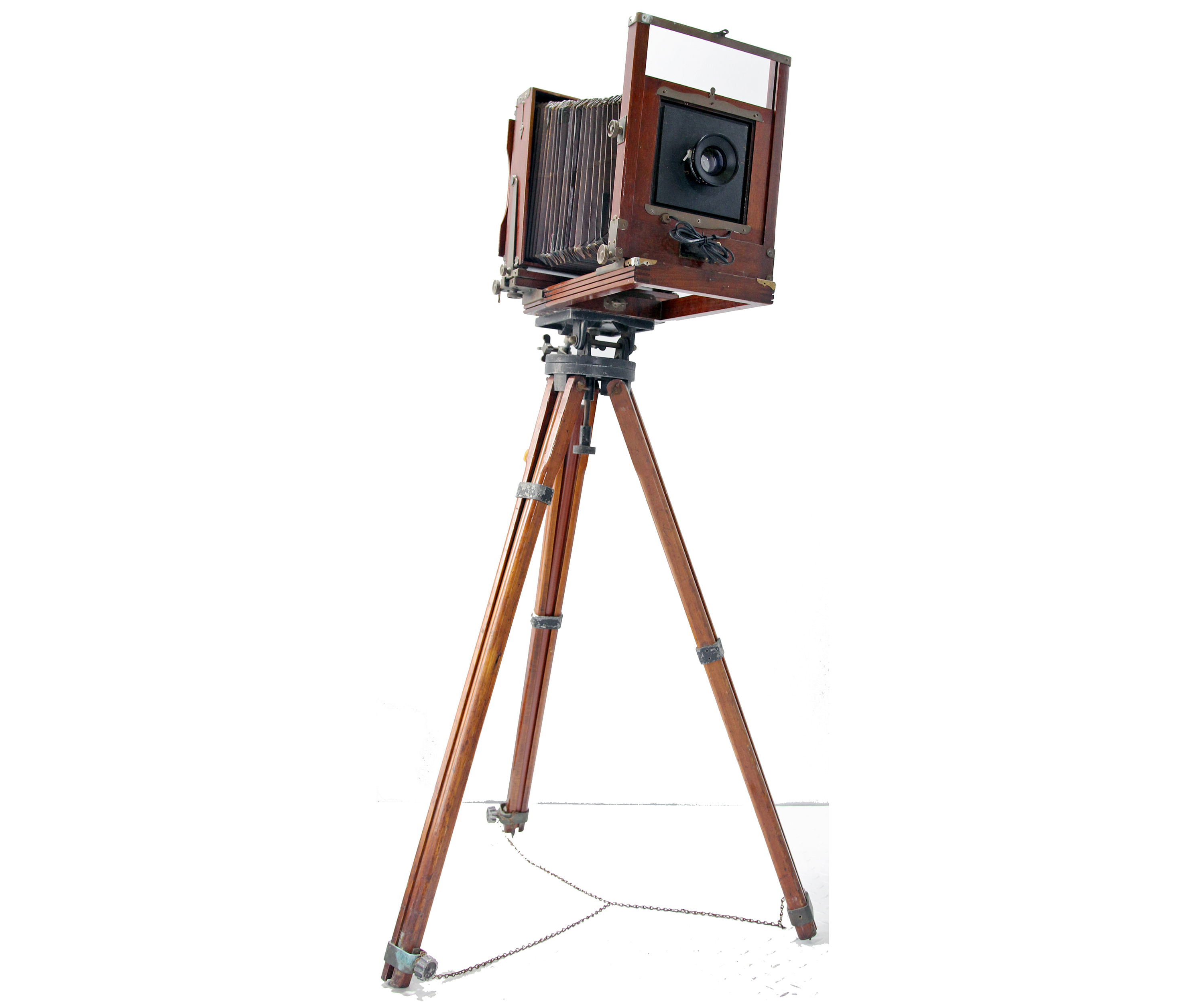
The Eastman View Camera No. 2-D is a good example of the folding cameras that were used from the late 19th century to mid-20th century.
Its most distinctive feature is its accordion-like bellow and polished cherry-wood finish. The camera was manufactured between 1921 and 1950.
